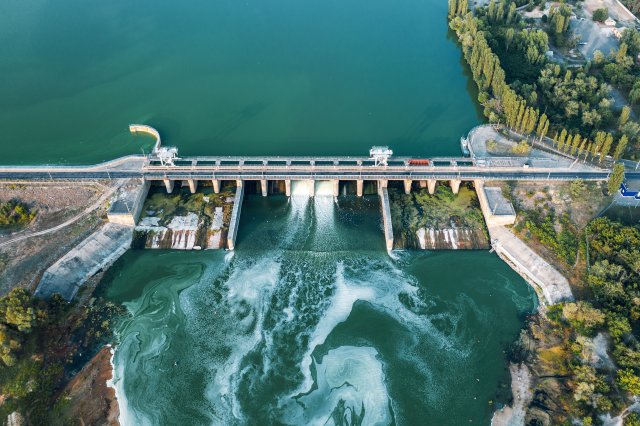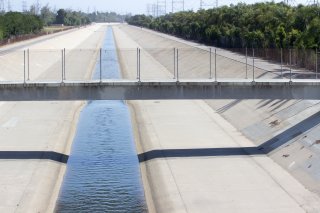Nonpoint Source: Hydromodification and Habitat Alteration
319 Grants Across the Country: Water Quality Improvements:

Overview:
Hydromodification activities include channelization and channel modification, dams, and streambank and shoreline erosion. A frequent result of channelization and channel modification activities is a diminished suitability of instream and streamside habitat for fish and wildlife. They can also alter instream patterns of water temperature and sediment type, as well as the rates and paths of sediment erosion, transport and deposition. Hardening of banks along waterways has increased the movement of nonpoint source pollutants from the upper reaches of watersheds into coastal waters.

Dams can adversely impact the hydraulic regime, surface water quality and habitat in the stream or river where they are located. The siting, construction and operation of these facilities have a variety of impacts on these systems.
The erosion of shorelines and streambanks is a natural process that can have either beneficial or adverse impacts on the creation and maintenance of riparian habitat. Excessively high sediment loads can smother submerged aquatic vegetation, cover shellfish beds and tidal flats, fill in riffle pools, and contribute to increased levels of turbidity and nutrients.
Additional Resources

- It’s all connected! How dam removal restores flow, water quality and aquatic connectivity (pdf) This infographic shows how the EPA and the Clean Water Act play a role in dam removal projects that restore water quality, improve aquatic connectivity and provide other benefits.
- National Management Measures to Control Nonpoint Source Pollution from Hydromodification
The primary goal of this guidance document is to provide technical assistance to states, territories, tribes and the public for managing hydromodification activities and reducing associated NPS pollution of surface and ground water. The document describes examples of the implementation of practices that can be used to reduce NPS pollution from activities associated with channelization and channel modification, dams, and streambank and shoreline erosion. - Guidance Specifying Management Measures for Sources of Nonpoint Pollution in Coastal Waters See Chapter 6, Hydromodification: Channelization and Channel Modification, Dams, and Streambank and Shoreline Erosion
